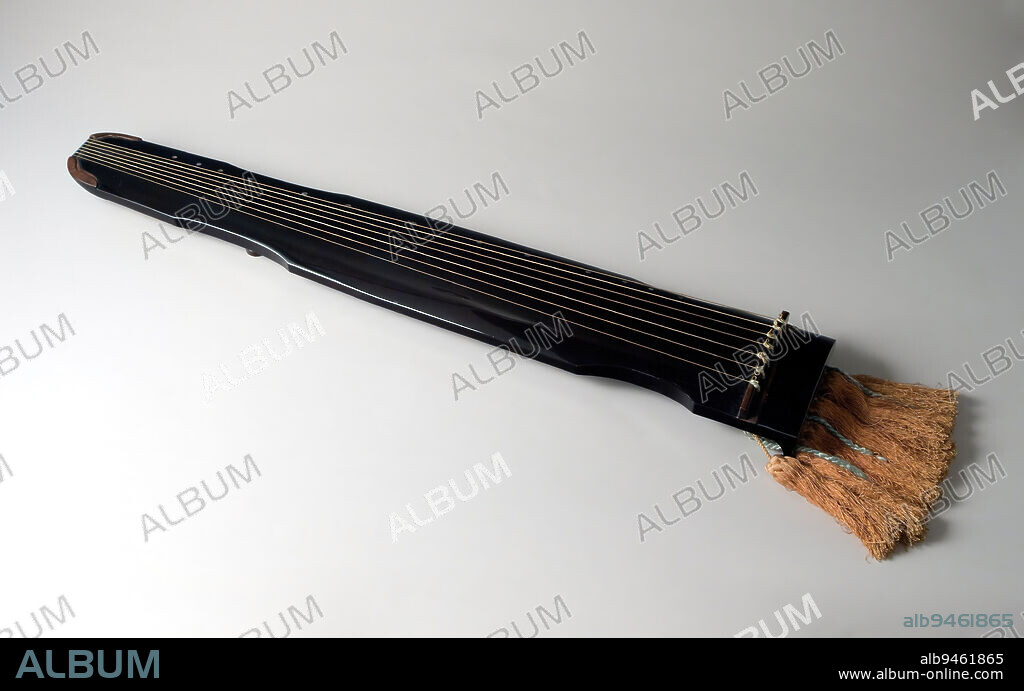alb9461865
Zither named 'Flowing Water', 1794, Nakamura Stetsu, 3 × 32 3/8 × 5 3/8 in. (7.62 × 82.23 × 13.65 cm), Wood with black lacquer and mother-of-pearl inlay; silk tassels, Japan, 18th century, The seven-stringed zither, called kin in Japanese, has been played in China (where it is called qin) for at least 3,000 years. It was introduced to Japan by the 700s and was a common instrument in the cultural sphere represented in The Tale of Genji. This example of a kin was created by an artist of the celebrated Nakamura family of lacquerers, all of whom used the given name Stetsu. The artist of this zither, which is dated to 1794, was probably the fifth-generation Nakamura Stetsu, who lived from 1764 to 1811. The Nakamura lacquerers maintained relationships with Japans leading cultural trendsetters and were celebrated for their craftsmanship.

|
Zu einem anderen Lightbox hinzufügen |
|
Zu einem anderen Lightbox hinzufügen |



Haben Sie bereits ein Konto? Anmelden
Sie haben kein Konto? Registrieren
Dieses Bild kaufen.
Nutzung auswählen:

Untertitel:
Siehe automatische Übersetzung
Zither named 'Flowing Water', 1794, Nakamura Stetsu, 3 × 32 3/8 × 5 3/8 in. (7.62 × 82.23 × 13.65 cm), Wood with black lacquer and mother-of-pearl inlay; silk tassels, Japan, 18th century, The seven-stringed zither, called kin in Japanese, has been played in China (where it is called qin) for at least 3,000 years. It was introduced to Japan by the 700s and was a common instrument in the cultural sphere represented in The Tale of Genji. This example of a kin was created by an artist of the celebrated Nakamura family of lacquerers, all of whom used the given name Stetsu. The artist of this zither, which is dated to 1794, was probably the fifth-generation Nakamura Stetsu, who lived from 1764 to 1811. The Nakamura lacquerers maintained relationships with Japans leading cultural trendsetters and were celebrated for their craftsmanship.
Bildnachweis:
Album / quintlox
Freigaben (Releases):
Model: Nein - Eigentum: Nein
Rechtefragen?
Rechtefragen?
Bildgröße:
5048 x 3146 px | 45.4 MB
Druckgröße:
42.7 x 26.6 cm | 16.8 x 10.5 in (300 dpi)
Schlüsselwörter:
 Pinterest
Pinterest Twitter
Twitter Facebook
Facebook Link kopieren
Link kopieren Email
Email
